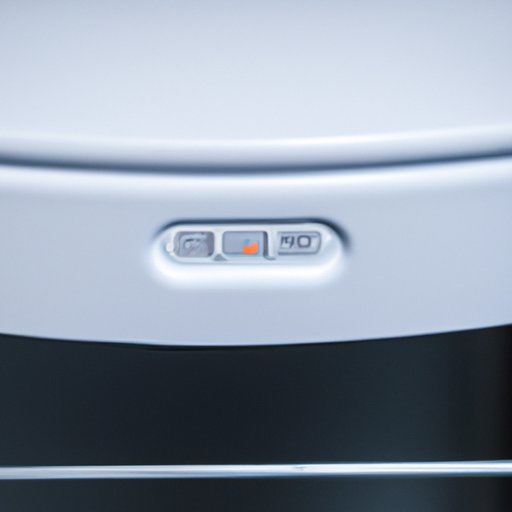Introduction
A refrigerator is an essential appliance in many homes. It is used to keep food fresh and prevent spoilage. The main function of a refrigerator is to cool its contents to a desired temperature. But how long does it take for a refrigerator to get cold?
How Long Does it Take for a Refrigerator to Get Cold?
The amount of time it takes for a refrigerator to get cold depends on several factors. These include the size of the refrigerator, the temperature setting, and the ambient temperature of the room. Generally, it takes about 24 hours for a refrigerator to reach its optimal temperature.
Factors That Impact Cooling Times
The size of the refrigerator is one of the most important factors when it comes to cooling times. A larger refrigerator will take longer to cool than a smaller one. Additionally, if the refrigerator is filled with warm or hot food, it will take longer for it to reach the desired temperature. Lastly, if the ambient temperature of the room is high, it will take longer for the refrigerator to cool down.
Temperature Settings and Cooling Times
Most refrigerators have adjustable temperature settings. In general, a colder setting will result in faster cooling times. However, it is important to note that if the temperature is set too low, the refrigerator may not be able to maintain the desired temperature.
Troubleshooting a Refrigerator That’s Not Getting Cold
If your refrigerator is not getting cold, there are several things you can do to troubleshoot the issue. It’s important to first identify the source of the problem before attempting any repairs.
Common Causes of Slow Cooling
One of the most common causes of slow cooling is an overfilled refrigerator. An overstuffed refrigerator can make it difficult for air to circulate, which can lead to slow cooling. Additionally, a worn out gasket or seal can prevent air from circulating properly, resulting in slow cooling. Lastly, a dirty condenser coil can cause the refrigerator to run inefficiently, leading to slow cooling.
Tips for Quickly Cooling a Refrigerator
If your refrigerator is not cooling quickly enough, there are several steps you can take to speed up the process. First, make sure the refrigerator is not overfilled. This will allow air to circulate more freely. Additionally, check the gaskets and seals to ensure they are in good condition. Clean the condenser coils to remove any dirt and debris that may be blocking air flow. Finally, turn the temperature setting to the lowest setting.
Pre-Cooling Your Refrigerator
Pre-cooling your refrigerator is an effective way to reduce cooling times. Pre-cooling involves turning on the refrigerator and allowing it to cool down for several hours before adding any food. This can help reduce the amount of time it takes for the refrigerator to reach its desired temperature.
Benefits of Pre-Cooling
Pre-cooling has several benefits. First, it reduces the amount of time it takes for the refrigerator to reach its optimal temperature. Additionally, pre-cooling helps maintain a consistent temperature throughout the refrigerator, reducing the risk of food spoilage. Finally, pre-cooling can help reduce energy consumption, since the refrigerator won’t have to work as hard to cool down.
Is It Safe to Put Hot Foods in a Refrigerator?
It is generally not recommended to put hot foods directly into a refrigerator. Doing so can raise the temperature of the refrigerator, making it difficult to maintain a consistent temperature. Additionally, putting hot foods in the refrigerator could cause other foods to spoil. For best results, allow hot foods to cool to room temperature before transferring them to the refrigerator.
Conclusion
In conclusion, it typically takes about 24 hours for a refrigerator to get cold. The size of the refrigerator, the temperature setting, and the ambient temperature of the room all play a role in the cooling process. If your refrigerator is not getting cold, there are several things you can do to troubleshoot the issue. Additionally, pre-cooling your refrigerator can help reduce cooling times and energy consumption. Lastly, it is generally not recommended to put hot foods in a refrigerator.
Summary of Key Points
To summarize, it typically takes about 24 hours for a refrigerator to get cold. Factors such as size, temperature setting, and ambient temperature of the room can impact cooling times. Pre-cooling the refrigerator can help reduce cooling times and energy consumption. Lastly, it is generally not recommended to put hot foods in a refrigerator.
Final Thoughts
A refrigerator is an essential appliance for keeping food fresh and preventing spoilage. While it can take some time for a refrigerator to get cold, there are several steps you can take to reduce cooling times. Understanding how long it takes for a refrigerator to get cold and following the troubleshooting tips provided can help ensure your refrigerator runs efficiently and effectively.


